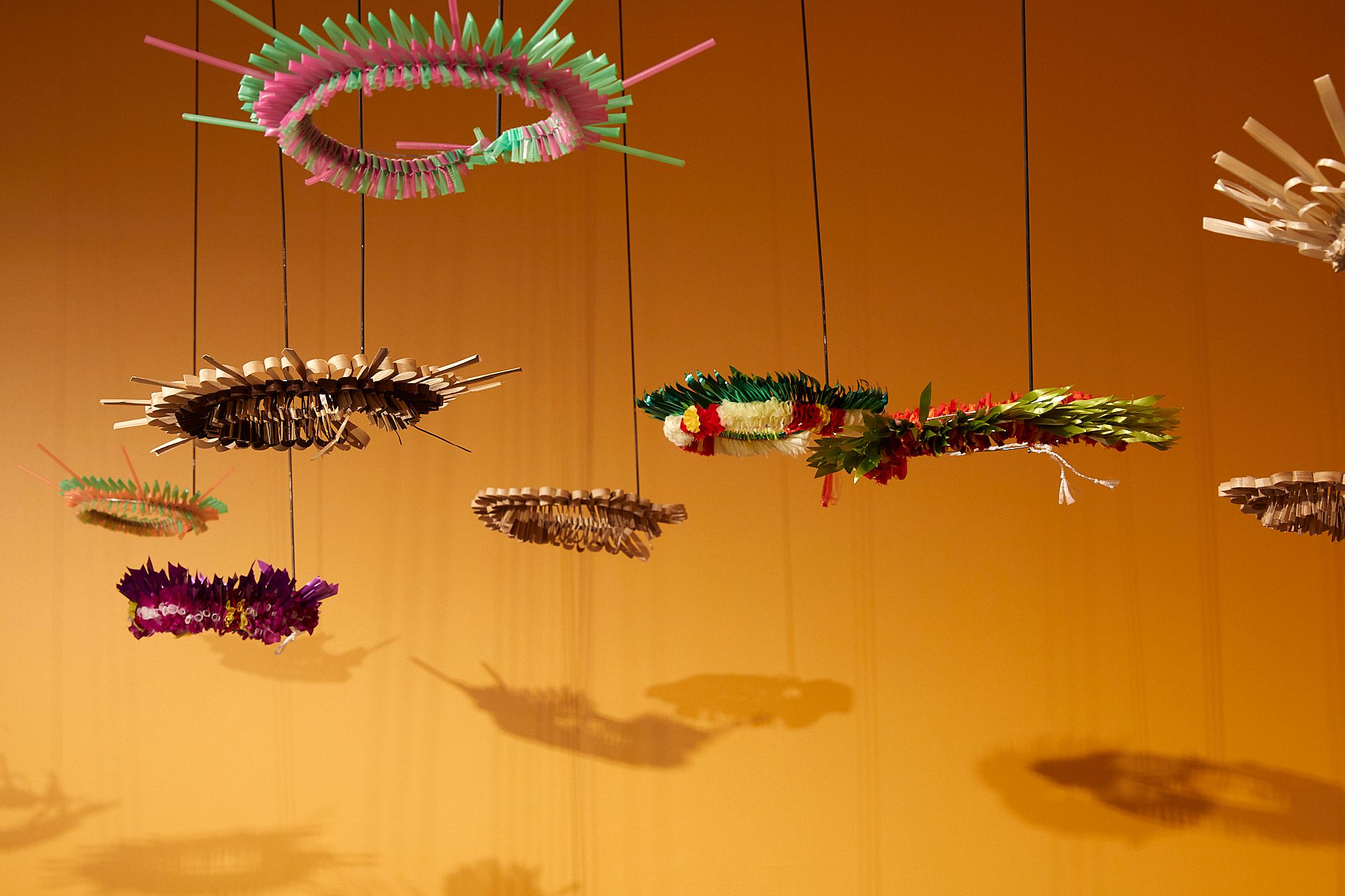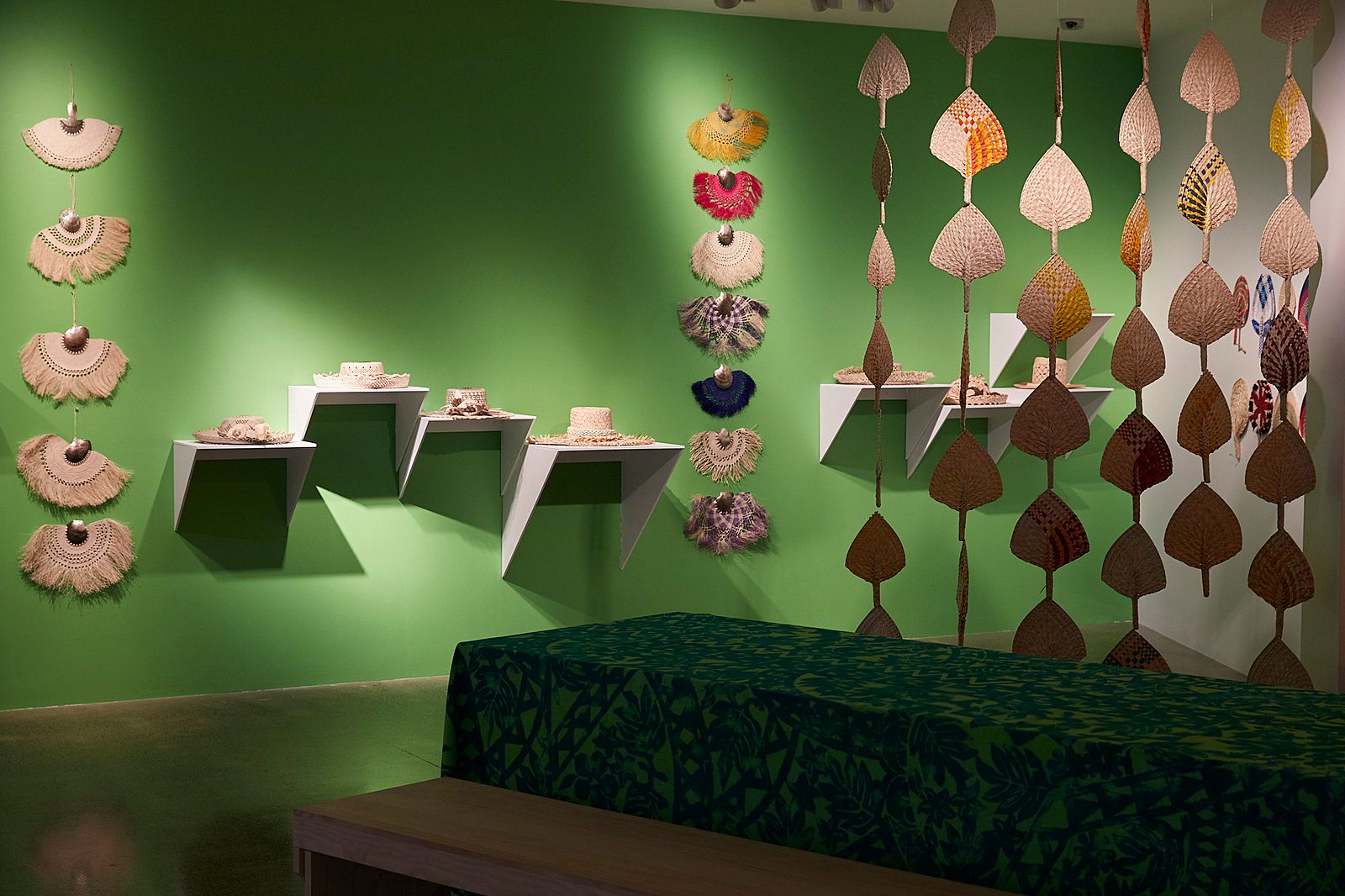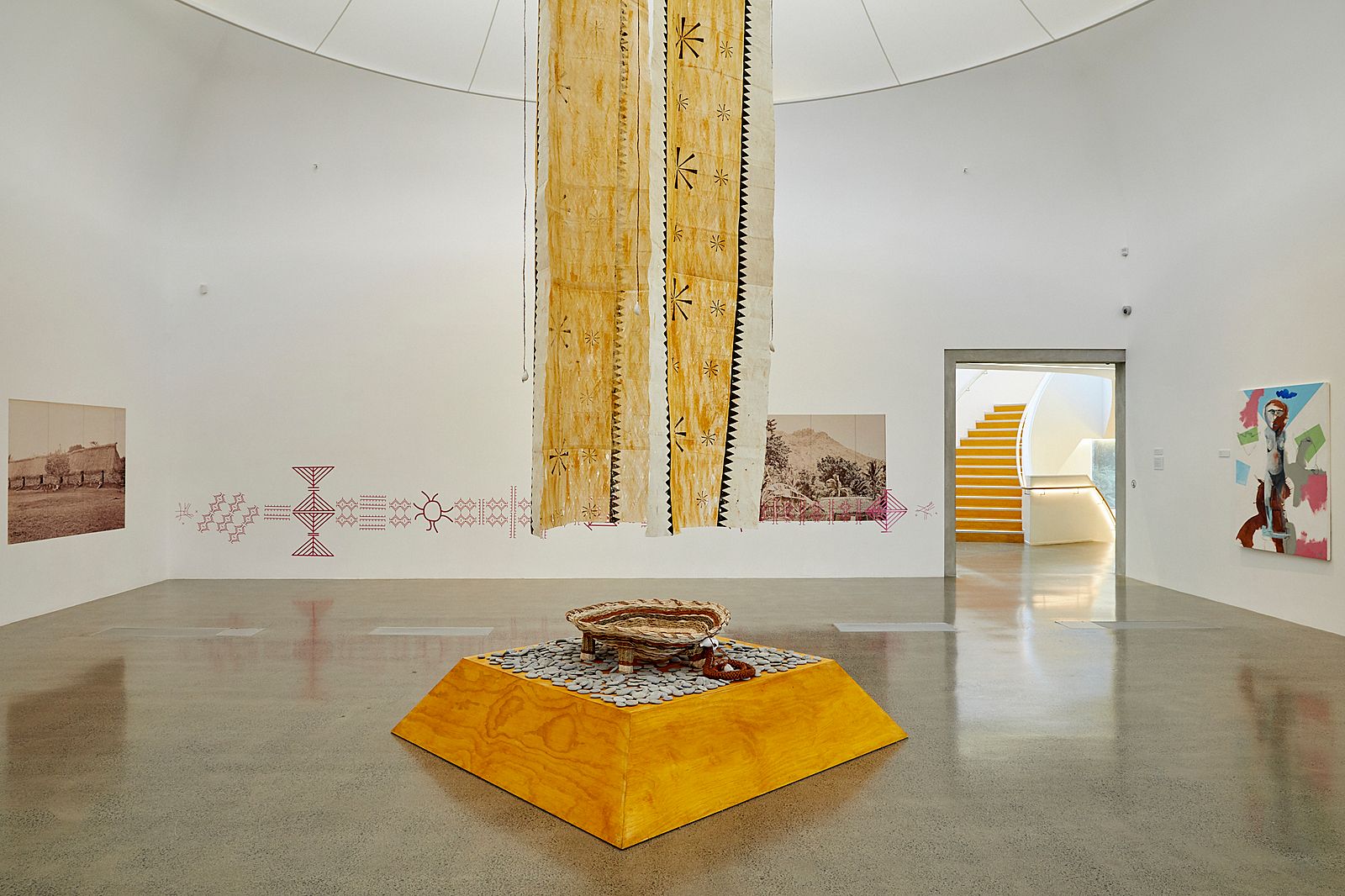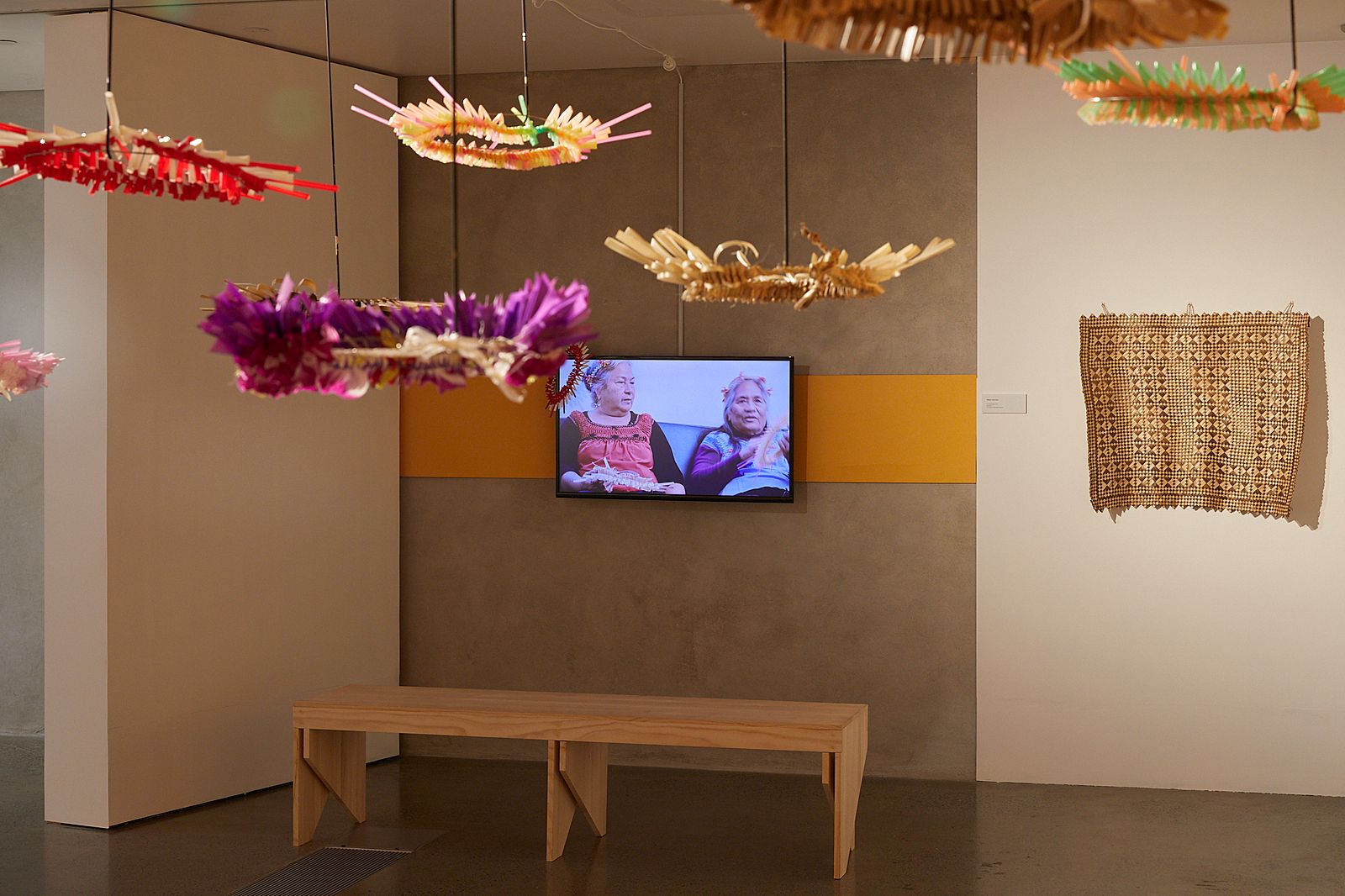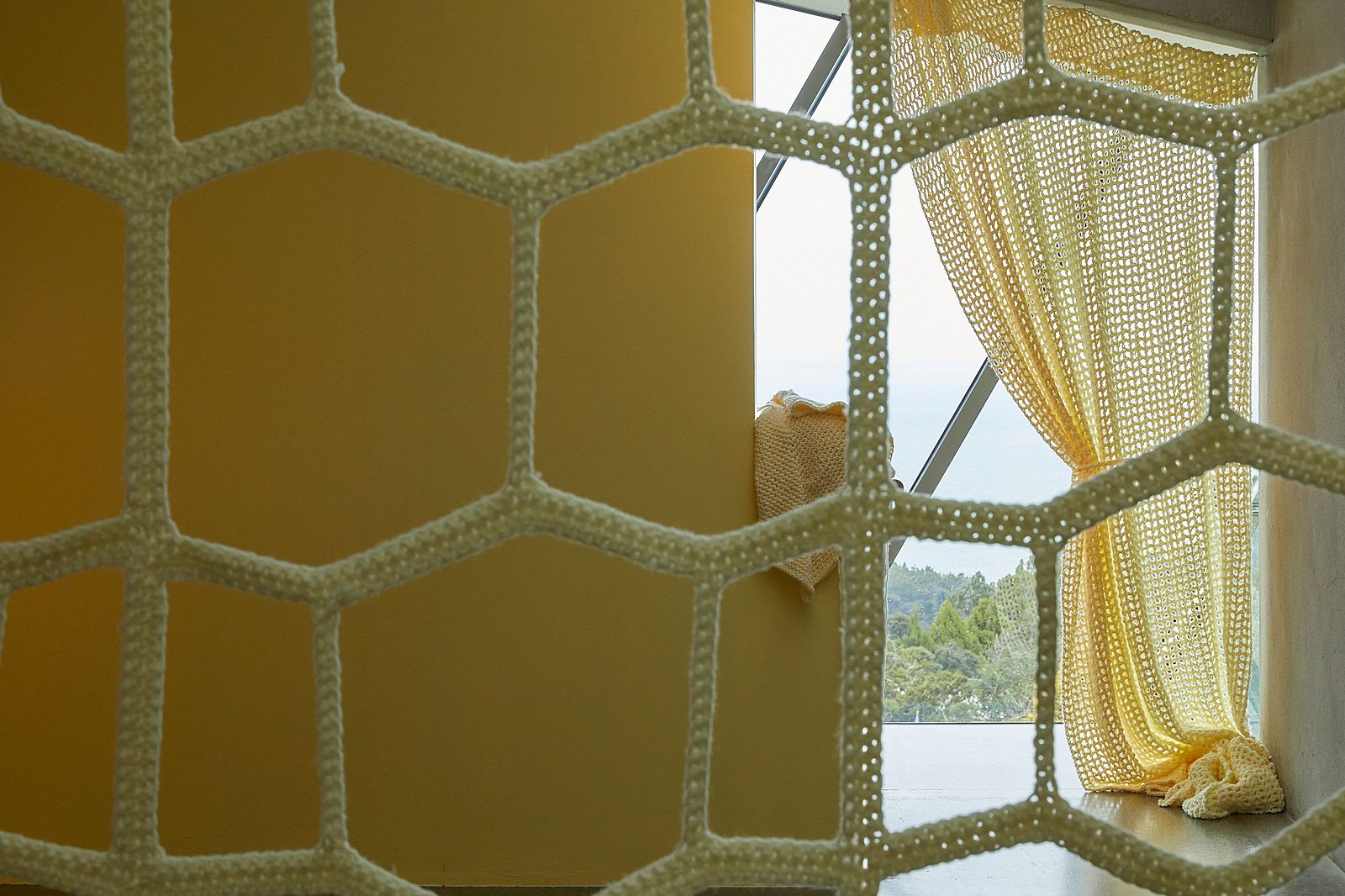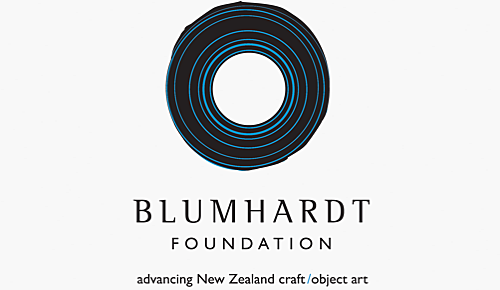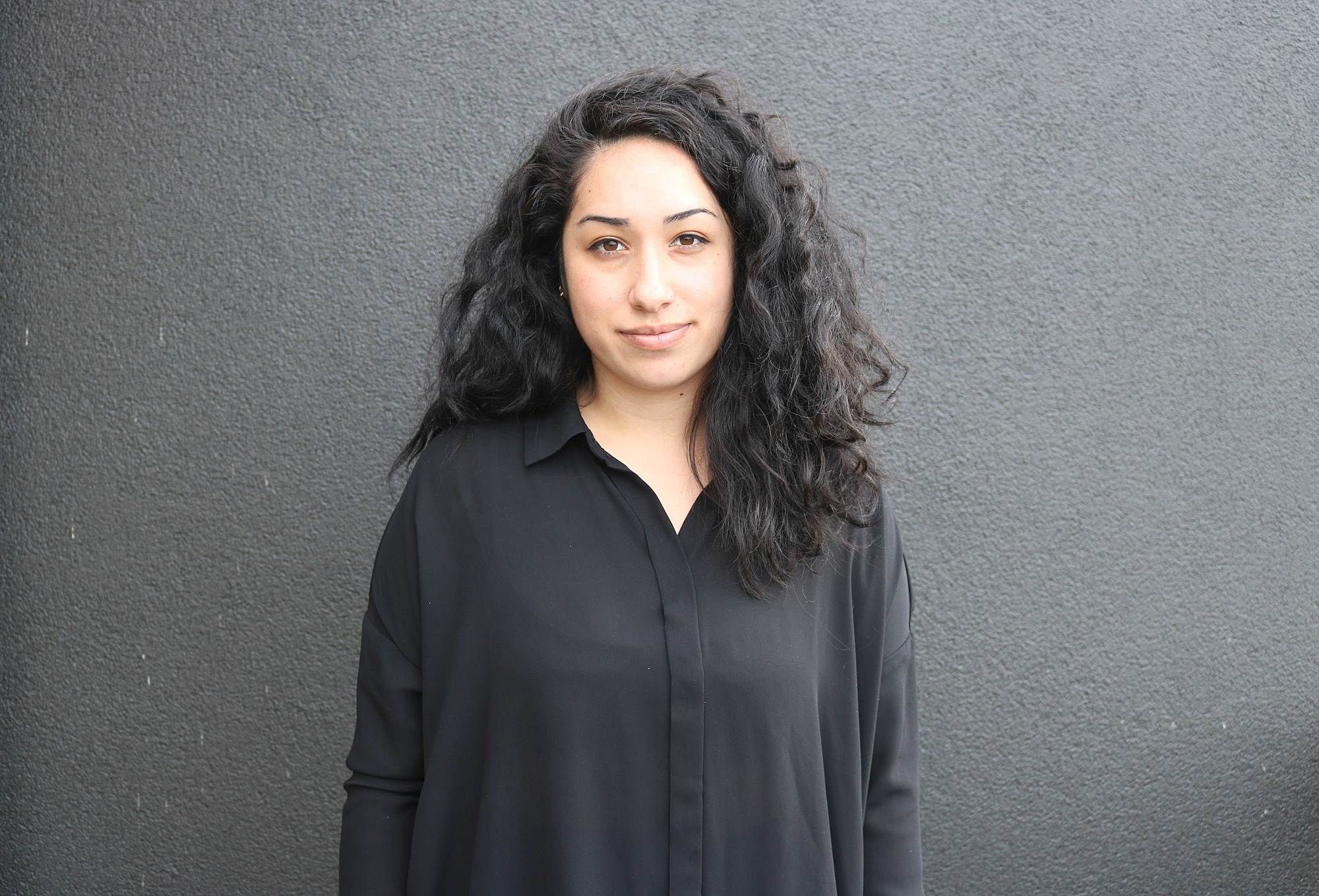Finding What’s Stolen: A Review of ʻnames held in our mouths’
Lana Lopesi explores the reawakened practices in Te Uru Waitākere’s ʻnames held in our mouths’.
Lana Lopesi explores the reawakened practices in Te Uru Waitākere’s names held in our mouths.
Through colonisation so many things have been stolen. Our gods and ancestral objects that live in museums throughout Europe and the States, and collecting institutions in Aotearoa; our languages; our customs; our ability to see ourselves as we once were; our standards of beauty; our governance systems; our conceptions of gender and sexuality; our people themselves were all, to various degrees, taken. The impact of these thefts is evident today through inequities in socio-political standing, education outputs, and over-representation in poor mental health statistics. Beyond this, we’re pertinently reminded that these thefts are ongoing with the current movements regarding sacred lands such as Mauna Kea in Hawaiʻi and Ihumātao here in Aotearoa. Experiences of loss and theft, such as these, are extensive, and vary between island groups, across the moana, territories, countries and tribes globally.
Over the past few decades, the efforts of communities, scholars and artists working to regain what was stolen have grown into worldwide efforts of remembering. This remembering spans the sailing of double-hulled canoes navigated only by the stars, the most well-known of which is Hōkūleʻa, to native feminist practices as written by Cutcha Risling Baldy (Hupa, Yurok and Karuk). As some of the last language speakers are getting older, in places like Australia and the States, language groups are being set up with urgency. This can be seen in the work done by the Advocates for Indigenous California Language Survival, Lakota Language Consortium and the Bininj Kunwok Regional Language Centre. For this remembering, the term 'sleeping' is used in Native American and Australian circles of language reclamation to denote that languages are not dead, they have not been destroyed; they are merely sleeping and waiting to be woken again.
This sense of remembering and reawakening sits at the centre of the latest exhibition names held in our mouths at Te Uru Waitakere Contemporary Gallery. Curated by Ioana Gordon-Smith (Faleula, Le’auva’a), the exhibition includes work by Sosefina Andy (Lotofaga, Vaiusu), Nikau Hindin (Ngāpuhi, Te Rarawa), Louisa Humphry (Kuria), Wikuki Kingi (Ngāi Tai, Te Whānau-ā-Apanui, Waikato-Tainui, Raukawa), Pacifica Mamas, Kaetaeta Watson (Tabiteuea) and The Veiqia Project. The exhibition focuses on “dormant or at-risk practices” and lays bare the ways that seven artists and collectives have either reawakened or continued the customary art forms within their work.
Picking up on the scholarship of people like Vicente M Diaz (Filipino, Pohnpeian), J Kēhaulani Kauanui (Kanaka Maoli) and Teresia Teaiwa (I-Kiribati, African American), the exhibition looks at the 'roots' and the 'routes' present in contemporary Moana, Māori and Indigenous experience. Through this, as Gordon-Smith explains in the exhibition introduction, the exhibition attempts to expose “a number of oscillating concerns, such as the twin needs of protectionism and open sharing; revival and adaptation; local and global influences.” As a framing device, Gordon-Smith’s use of the word ‘Moana’, over Pacific or Oceania, similarly fits the context of remembering found in the exhibition. Advocated for by scholars such as Hūfanga 'Ōkusitno Māhina (Tonga), Kolokesa Uāfā Māhina-Tuai (Tonga) and Tēvita O Kaʻili (Tonga) the word ‘Moana’ draws on the shared language found among some islands in the Pacific to reframe and recontextualise the region through Indigenous worldviews. This is in the context of continued interrogation of the word 'Pacific' which was introduced to the region by Portugese sailor Ferdinand Magellan and translates to ‘peaceful sea’. The debate around the use of the term is part of an ongoing process of decolonisation and the importance of each of us having the ability to self-identify, regardless of the term we each land on. It also reminds me of the complications of naming groups of people who perhaps before now did not have, or need to have, a shared name, this is what Gordon-Smith has previously referred to as “terms of convenience”. As a writer who also uses ‘Moana’, I do so because once you’ve begun interrogating the word Pacific, it becomes difficult to feel comfortable using it. While it’s not perfect, it’s better – in my mind anyway – and right now it’s the sharpest tool I have.
Perhaps one of the most recognisable groups in Aotearoa continuing homeland practices is the Pacifica Mamas. Working from West Auckland’s Pacifica Arts Centre since the 1980s, the Pacifica Mamas (and Papas) “adopted the name of their hub as the Pacifica Arts Centre as one of convenience and easy recognition,” writes Gordon Smith in the wall text. Nearly two decades later, they are seeking to rename the space with their original, intended name: Moanaroa. Using this name, Moanaroa is also the name of the Mamas’ installation. The Mamas take over the gallery’s education room, where fans and hats hang in the bright-green painted space. The use of the education room is appropriate given the extensive years of support and sharing the Mamas have offered the communities they touch. As curator Gordon-Smith suggests, the exhibition reminds us that the home of the Pacifica Mamas is rooted not in a physical location, but rather in the relationships that sustain their passion and culture across seas and spaces. Home is where the (he)art is.
The exhibition is in large part an exercise of turning practices that take place in homes, in community spaces, in private and on our bodies into art works for the gallery and its audiences. This becomes clear with the work by The Veiqia Project. The Veiqia Project, made up of Margaret Aull (Lautoka, Te Rarawa, Tūwharetoa), Donita Hulme (Nadroga), Joana Monolagi (Serua), Dulcie Stewart (Bua), Luisa Tora (Kadavu) and Tarisi Vunidilo (Kadavu), is a collective of Fijian artists, curators and researchers living in Aotearoa, Australia and Hawaiʻi who come together to remember Veiqia, Fijian female tattooing, through their diverse making practices. Practiced and received by women, veiqia was endangered by the onset of Christianity to the islands and eventually ceased, and the practice has only recently been revived through the researching of archival material. In the centre of the gallery sits Rai Lesu. Rai Lesu, loosely translated as ‘to look back’, makes up half of The Veiqia Project’s installation. Modelled on a bure kolou, a Fijian spirit house, the sculpture references the intergenerational transmission of knowledge at play within the collective, specifically between Joana Monolagi and Luisa Tora, as well as their ancestors. Rai Lesu is surrounded by a frieze of archival material, painting and veiqia patterns some of which are worn by those in the collective. Perhaps the most politically potent component of The Veiqia Project’s installation is that which is missing: the representation of veiqia today as it exists on women’s skin. For a number of years now, Julia Mage'au Gray, a tatu practitioner of Mekeo, Papua New Guinea and Australia, has been making veiqia for Fijian women living mostly in Aotearoa and Australia, many of whom are members of The Veiqia Project. The collective chose not to focus on veiqia as an artform that is given and received on skin for their installation, but rather the ways in which that knowledge is transferred or learned. Speaking as someone who has had the privilege to experience receiving tatau from Mage’au Gray, I feel the absence of the living practice seems like a missed opportunity for gallery visitors.
Waikato and Whiritoa-based artists Louisa Humphry and Kaetaeta Watson fill a warm room of deep yellow with an array of raranga (weaving ni-Kiribati). Te tai and te itera (headdresses) made from plastic drinking straws, raffia and other recognisable materials, are suspended from the ceiling at eye level. Full female and male bwaai ni mwaie (dance costumes) also in the exhibition space. While similar to The Veiqia Project in that there are no live bodies in the exhibition space, the installation makes a deliberate reference to the bodies that are missing and gestures toward how these skillfully woven works would be danced with. Geographically distant from the materials typically used for raranga in Kiribati, Humphry and Watson use local materials both natural and synthetic. As individual weavers who also weave with each other and other artists, the adaptation of materials is troubleshot together to find the best ways to adapt their i-Kiribati forms to their Aotearoa environment. In a way, the raranga is a supplement to the dancing and singing of the Kiribati community in Aotearoa. Bringing this practice into the gallery space makes clear the people who bring it life: the weavers and the performers.
Adapting practices to new homelands is a theme continued in the work of Sosefina Andy. Without access to the laufala (pandanus) that her grandmother uses as a weaver, Andy has turned to crochet to emulate the time-based and repetitive practice of her grandmother’s weaving. Honouring this matriarchal line, her work references domestic interiors as sites of learning and knowledge sharing. As an artwork that exists primarily within an exhibition practice, Home: in a chain of memory, is quite different to most of the works within the exhibition. Andy offers a fresh and conceptual approach to the adaptation of familial practices that occurs when living at a distance to homelands. At the end of this exhibition, Andy will unravel the crochet works leaving only an animated drawing as the record she keeps of the work. This act of making and unravelling speaks to the idea of muscle memory, working from the position that knowledge and memory are embedded within the act of making, even across geographies.
In the final room of the exhibition, and perhaps the smallest contribution by scale, sits the work of Wikuki Kingi Jr. Kingi, is someone who is evidently deeply embedded within his area of expertise; he was both an apprentice carver and kaiwaka (paddler) of the waka-building project Tahere Tikitiki at only 11 years old, and since then he has become a recognised tohunga whakairo. The question Kingi asks to guide his work in this exhibition is “if our tūpuna had power tools and digital technology, how would they have approached carving?” Along the gallery wall hangs a series of exquisitely made weapons and hoe waka. With contrasting browns and rare specks of bright blue pāua shell the works – which use customary forms yet contemporary processes – raise the age-old question of what makes something customary or contemporary.
If our tūpuna had power tools and digital technology, how would they have approached carving?
In stark contrast, the middle of the room is filled of the customary tools such as shell, rock and other raw materials that Nikau Hindin uses for her aute – Māori tapa cloth which lines the remaining walls of the exhibition space. Over six years, Hindin has been working to revitalise the practice of aute, and recently her efforts have received much attention. However, unlike many of the other practices in the exhibition which seek to adapt customary practices to new times or new landscapes, Hindin is attempting to remember the practice as it was. This process includes the growing of her own aute plants and the carving of her own beaters from customary materials. Unlike tapa from other island groups, there is no existing reference material for what would have been painted on to the aute. Building up a body of motifs from other artforms such as kōwhaiwhai, whakairo and tukutuku, the works in this exhibition are centred on celestial bodies and navigation, which Hindin has been studying on the Hōkūle’a and Haunui waka, both of which she has sailed on. For Hindin, beating aute is one component of a wider reconnection for her as a wahine Māori, which includes connecting to land, plants, te reo Māori and maramataka.
Names held in our mouths is a striking collection of artistry which generally does not get brought into gallery spaces. While many of the projects involved are somewhat well known individually, en masse the significance of these contemporary art projects and practices all working to reawaken knowledges and art forms which may have been lost becomes apparent.
As I walk through the gallery, I wonder what is it about this specific moment in time that the reawakening of many practices, is becoming so present globally. The exhibition comes just one month after the Labour Government’s Wellbeing Budget 2019 was announced, wherein, according to Minister for Pacific Peoples, Aupito William Sio, an “unprecedented amount of money” was earmarked for Māori and Pacific peoples which offers a “strong starting point for us.” One noticeable area of investment was $20 million into Pacific languages over four years, which will go towards creating a new Pacific Language Unit to make sure the languages thrives in New Zealand for generations to come. Alongside Pacific languages, kōhanga reo will receive a significant boost in funding. Associate Education Minister Kelvin Davis said, “This is the start of what equality for kōhanga reo looks like. Kōhanga reo are being sustained by voluntary work and lower than usual pay rates, and today’s announcement will go some way to recognising the importance of volunteers and staff.” He went on to say, “te reo Māori is a tāonga. We have a duty to protect it and kōhanga reo are essential to its survival and the first responders to teaching te reo Māori to the next generation.” All of this is 40 years on from an earlier wave of language revival, which saw the establishment of Te Kōhanga Reo (1982), followed by the Sāmoan language equivalent, A’oga Fa’a Samoa (1984).
an exhibition of this nature is no easy feat, awakening practices are by nature controversial
It’s such a breath of fresh air to walk into a gallery and see it enlivened by these works and the people who made them. However, an exhibition of this nature is no easy feat – awakening practices is by nature controversial. Awakening ancestral knowledges raises many questions such as: Who has the right to pass on and receive these practices? What does adaptation look like and how do you hold the integrity of what you’re doing? What is the appropriate mode for exhibiting them? All these points can (and do) become areas of heated debate, disagreement and negotiation within community groups. The question that lingers over the exhibition is to what extent intimate knowledge should be shared in the gallery.
These practices – which happen individually and yet collectively at the same time – seem to benefit from each other, and perhaps even require each other to move forward. Maybe it’s a matter of seeing one group of people delve into ancestral knowledges that encourages another group or individual to do the same. Ultimately though, within this talk of awakening we are reminded of what is sleeping, what has been stolen, what is yet to be reclaimed and who and what is left behind in the process. In presenting these works together, the exhibition prompts conversations on the contentions that arise when practices are reawakened; more importantly it highlights the fact that dances are being danced, songs are being sung, aute is being pounded and marks are being worn. Names held in our mouths, is a stunning exhibition that reprioritises who belongs in the gallery space.
names held in our mouths
Sosefina Andy, Nikau Hindin, Louisa Humphry, Wikuki Kingi, Pacifica Mamas, Kaetaeta Watson, The Veiqia Project
Curated by Ioana Gordon-Smith
8 June – 18 August 2019
Te Uru Waitākere
This piece is presented as part of a partnership with Blumhardt Foundation. They cover the costs of paying our writers while we retain all editorial control.
